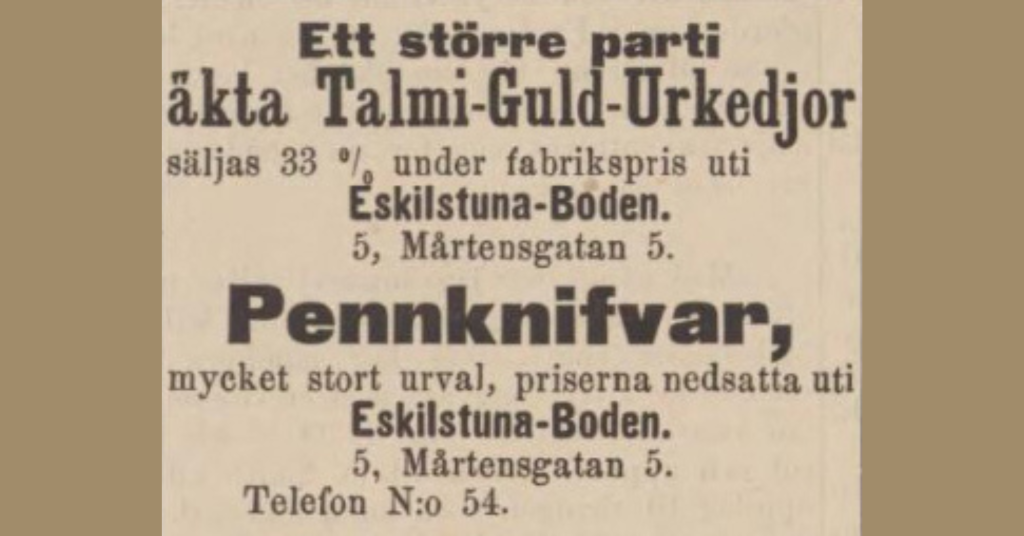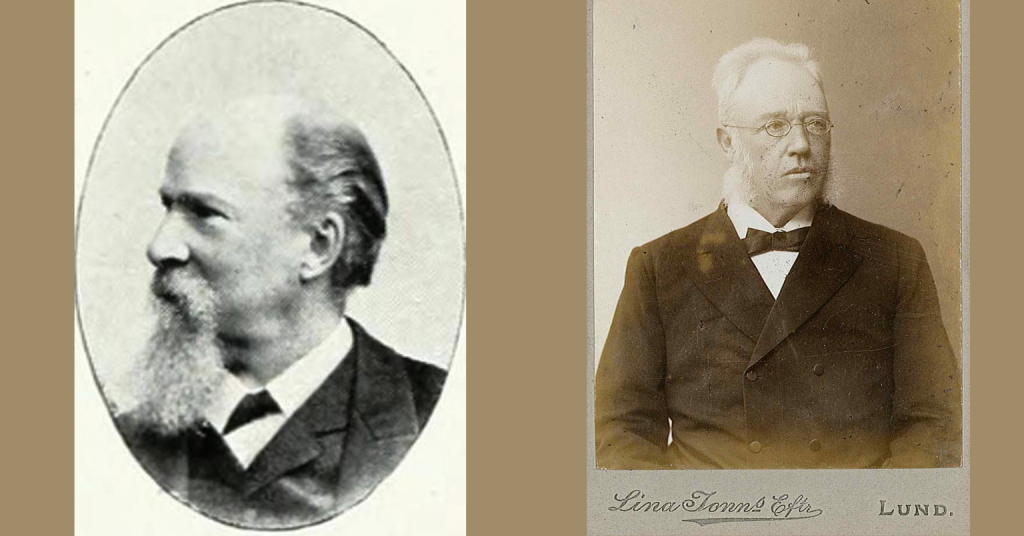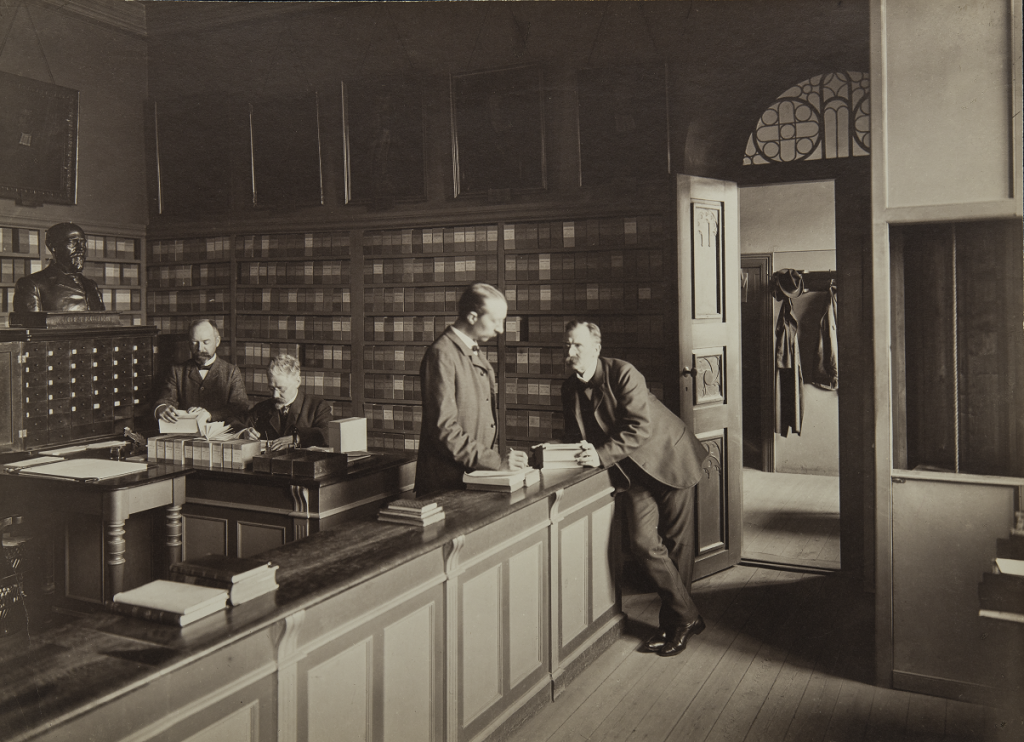Slightly more than fifty years ago, in 1973, the pop quartet Björn & Benny, Agnetha & Frida – later thankfully shortened to ABBA – had their breakthrough in Melodifestivalen with the song “Ring Ring”. They finished third, but just the next year they got their revenge with “Waterloo”, a song with which they later won the Eurovision Song Contest. Slightly less than a hundred years before ABBA rhetorically asked “why don’t you give me a call”, and just about seventy years after the real battle of Waterloo, the question of telephone connections wasn’t just an issue for pop groups (to the extent that such things existed during the late nineteenth century) but also for Lund University.
The telephone had been patented by Alexander Graham Bell (the contributions of other scientists notwithstanding) in 1876 and spread to the rest of the world, Sweden included, soon thereafter. As early as 1883, certain Lund-based companies advertised their phone numbers in the Lunds Weckoblad newspaper, and it wasn’t long before voices were raised demanding that the University should embrace this newfangled technology.

Just ten years after Bell’s patent, in 1886, the question of ‘connection to the state telephone network’ reached the University leadership; Professor Magnus Blix (physiology) and Professor Hjalmar Lindgren (anatomy) had, together with the Head of the University Library Elof Tegnér, applied to the King in Council for such a connection. The government referred the question to the University Board, which discussed the issue during their meeting on 4 December. At this meeting, the otherwise technologically progressive Professor of Botany Fredrik Areschoug declared that he was not in need of a telephone, whereas Professor of Astronomy Axel Möller immediately jumped at the opportunity to make calls to and from the University’s observatory. He was enthusiastically backed up by the librarian, Elof Tegnér, who declared that the University Library was ready to pay for their own telephone connection.
The board, apparently sensing a breath of fresh telephonic air, decided to put the question to all departments of the University, asking them if they were interested in joining in on the request for a telephone connection. At the next board meeting on 22 December 1886, the departments of physics and pathology – headed by Professor Albert Holmgren and Professor Maximilian Victor Odenius, respectively – had jumped on the telephone bandwagon. The board thus decided to apply to the King in Council for a connection from the state telephone network to the University Library as well as the departments of anatomy, astronomy, physiology, physics and pathology; and as a small bonus Professor Lindgren had managed to add a request for a telephone connection between the Department of Anatomy and his private home!
This request from the University Board did not, however, mean that the University was prepared to pay for the connection – there wasn’t enough centrally available funds for this. The Royal Telegraph Board was ready to give the University a good deal though – calls, maintenance and the telephones themselves were to be free, as long as the University was ready to pay the connection fee. The board thus happily left the issue of paying 200 crowns each to the library and the five departments, noted that neither Professor Areschough nor the University Chief Financial Officer felt that a phone connection between the Department of Anatomy and Professor Lindgren’s home was reasonable if it were to cost a further 200 crowns, and then recessed – most likely in order to enjoy the Christmas holidays.

The government apparently enjoyed the holidays, too, since it wasn’t until 28 January 1887, that the King in Council gave his assent to the University’s request for free (apart from the connection fees) phone connection to ‘those academic departments in Lund, for whom the connection would be, from the perspective of scientific interest or other societal utility, of comparatively large benefit’. Royal assent was however, perhaps not surprisingly, withheld from Professor Lindgren’s request for a free telephone between his home and place of work. Phone lines were drawn and sometime in early March (all the bills are dated 5 and 8 March) 1887 the talkative public could reach five University departments and the library by phone.
The perceptive reader will now note that in 1887 there was no way to call the University’s leadership or administration. This fact is made even more interesting when one considers that the University had inaugurated its new grandiose main building five years earlier, in 1882. So, when professors and librarians could call one another to their hearts’ delight the Vice-Chancellor and the chief financial and administrative officers were without such a connection. This defect was quickly realized, and in 1889 these two men received a shared telephone, subject to the same financial arrangement as the library and the five departments.

The age of unlimited free telephony at Lund University lasted until 1902. The single shared telephone in the University Main Building from 1889 had by then proven to be inadequate, and the departments of botany (Areschoug had retired in 1898), zoology, geology and mineralogy, chemistry and medical chemistry also wanted in on the economically advantageous free telephone solution. However, these were different times, and in response to the University’s request for more telephone lines ‘on the same terms’ the King in Council decided that free telephone connections in exchange for only the connection fee was no longer on the table. Rather, ‘the establishment of the telephone connections in question may only take place in the regular manner’. And since then, Lund University has had to pay for its phone services.
Today, when Lund University has 8800 employees who – with few exceptions – have their own work telephones, it is difficult to imagine a time when the University as a whole only had six phones, none of which connected to the central administration. One also wonders how these 8800 employees could affect the outcome of the voting in Melodifestivalen if the University’s phone expansion hadn’t become chargeable in 1902 – just imagine the amounts of free votes that could have been cast!
Perhaps then, at long last, the right song would have won. 😉
Henrik Ullstad
Archivist at the University Archives (reachable at +46 46 222 16 70)
The author wishes to extend his gratitude to Lukas Sjöström for helping with proof reading, as well as to archivist Fredrik Tersmeden for good cooperative archival research, and helping with proof reading.

